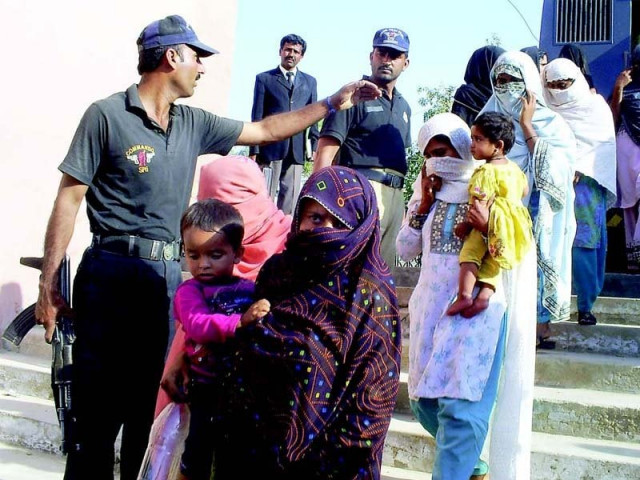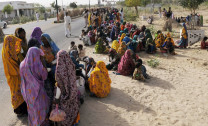Looking for a revival: ‘Bring back the lady health workers’
Speakers say approximately half of maternal deaths in Sindh happen at home

File photo of lady health workers. PHOTO: NAEEM GHOURI/EXPRESS
Citing reasons for the high maternal mortality in Sindh, University of British Columbia professor Dr Peter Von Dadselszen said that the lack of autonomous decision-making by women and delays in responsive treatment make deliveries complicated. “Approximately half of the maternal deaths happen at home so it is critical to develop a model for prediction and risk assessment,” he asserted. “It is time to move beyond clinical entities to community-based interventions.”
He highlighted pre-eclampsia as the major factor of maternal deaths globally. The condition, a result of high blood pressure in the mother, usually begins after 20 weeks of pregnancy and, if left untreated, can prove fatal for both the mother and the child.
Sharing statistics, Dadselszen said that out of every 10,000 live births globally, 209 resulted in the death of the mother in 2013. “Deaths due to heart haemorrhages are 27.1 per cent, while hypertension causes 14 per cent,” he explained. “Hypertension usually occurs before any bleeding so it can be said to be the dominant cause of maternal death.”
Dadselszen suggested pre-eclampsia measuring methods that lady health workers could use with their smartphones in resource-constrained settings such as rural Sindh. “Pulse oximeters and specialised thermometers can be attached to smartphones to indicate the onset of hypertension and preemptive action can consequently be taken,” he explained, adding that community-level interventions for pre-eclampsia would be conducted in the province soon.
“Female education is the key to lowering fertility,” said Dr Ali Mir from the Population Council, adding that Pakistan was the sixth most populous country in the world. “According to a survey of highly educated women, the strength of planned pregnancies was two while unwanted pregnancies were less than one.”



















COMMENTS
Comments are moderated and generally will be posted if they are on-topic and not abusive.
For more information, please see our Comments FAQ